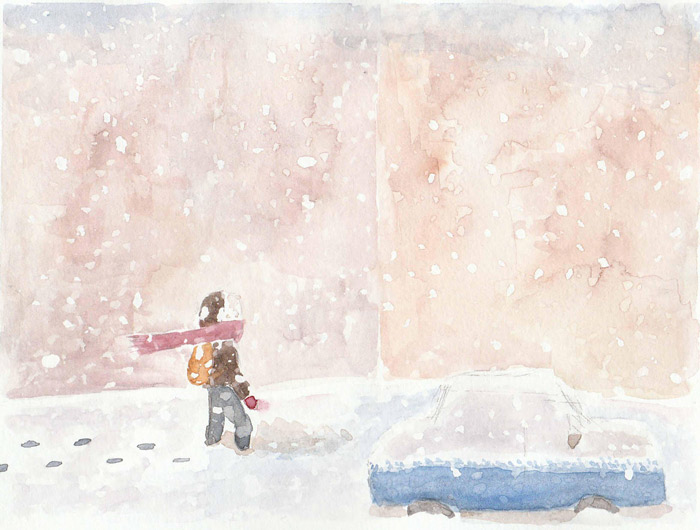On Jan. 4, 2018, much of the American and Canadian East Coasts were hit with chilling temperatures, snowy conditions, and hurricane-force winds. Iguanas fell from trees in Florida, Boston’s streets flooded with icy water, and parts of New Brunswick saw more than 50 centimetres of snow.
The culprit was a “bomb cyclone” named Winter Storm Grayson. In 1980, John Gyakum, professor in McGill’s Department of Atmospheric and Oceanic Sciences, helped coin the unusual term for this type of storm with former MIT professor Fred Sanders.
A process often referred to as “bombogenesis” by meteorologists, a bomb cyclone is a low-pressure system that intensifies rapidly over a short period of time: more specifically, at a rate of at least 1 millibar per hour for a 24-hour period. At sea level, normal barometric pressure is around 1,000 millibars. When pressure falls rapidly, it is indicative of stormy conditions. This 24 millibar rate was originally employed for the latitude of Bergen, Norway but the pressure required to form a storm of this nature changes depending on latitude.
“If you have a 24 millibar deepening rate for a 24-hour period in lower latitudes, [the storm becomes] a much stronger cyclone,” Gyakum said in an interview with The McGill Tribune.
Last week’s cyclone deepened off the coast of South Carolina and Georgia at a latitude of around 31 degrees North. According to Gyakum, the minimum threshold value necessary to form the bomb cyclone at this latitude is around 16 or 17 millibars, but the real deepening was around 50, making this storm a “superbomb.”
These storms are often accompanied by hurricane-force winds, storm surges—where winds transport ocean water into coastal areas—and heavy precipitation.
Under normal conditions, bombogenesis—a cold-season maritime phenomenon that, in rare circumstances, has been known to appear in warmer weather–occurs offshore with minimal impact to coastal areas and their inhabitants. Yet “bomb cyclone” Grayson affected millions of people, which is why the term took the media by storm.
Cold air mass is important for bombogenesis to occur. When cold air travels over warm waters, it destabilizes the atmosphere and increases the likelihood of thunderstorms. Thermal contrast between cold continents and warm ocean waters can also act as a mechanism for aiding cyclone development.
“One of the issues that comes about when we talk about global warming is that you might […] say that with global warming, we won’t have cold air masses as much,” Gyakum said.
This paradox has led some politicians to believe that global warming could lead to more pleasant temperatures. However, Gyakum advised looking at the big picture. February 2015 was the coldest February on record in Montreal, whereas globally, it was the second warmest.
Gyakum explained that, given the effects of climate change, there is potential for more extreme ocean cyclogenesis in the future. While modelling experiments show that hurricanes and storms in the future might not be more frequent, the ones that do occur may become more extreme.
“It’s very, very hard for us to attribute a particular event to climate change,” Gyakum said. “But, there are a few things that we do know [….] One impact of global warming is that sea levels have risen, and; for that reason alone, even the most ordinary of storms […] will produce more of an impact along coastal areas.”
The spike in sea levels is accompanied by an increase in ocean temperatures. Warmer oceans lead to a greater amount of water vapour in the atmosphere. Once the water vapour condenses, it acts as fuel for the development of these bombs.
Overall, Gyakum thinks that the term “bomb cyclone” can be beneficial, especially because people along the East Coast tend to give less thought to extreme weather conditions after the end of hurricane season.
“The fact is that many of these storms […] can be as devastating, if not more so, than hurricanes,” Gyakum said.







Being a meteorologist and teacher, a sound knowledge gathered from this article . I will be proud if I ever get opportunity to discuss with you.